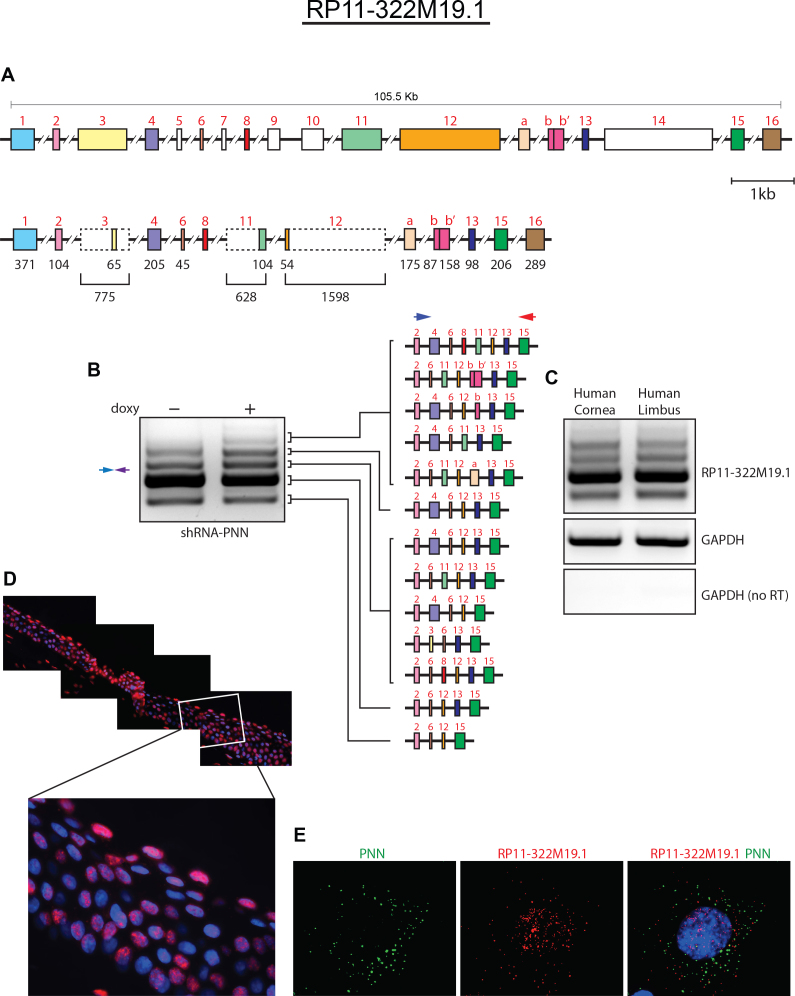Figure 4.
The long and complex lncRNA, RP11–322M19.1, also showed splicing alterations after Pnn knockdown. A: The reported gene for RP11–322M19.1 spans nearly 106 kb and contains at least 16 exons. Corneal epithelial cells express a complex array of isoforms of RP11–322M19.1 containing 11 of the known exons and two previously unreported exons (labeled a and bb’) were discovered through our RT–PCR and sequencing analyses. See Appendix 4. B: Subsequent to Pnn knockdown, the complexity of RP11–322M19.1isoforms further increased. C: Real-time PCR (RT–PCR) analyses reveal the presence of multiple splice variants of RP11–322M19.1 in corneal and limbal epithelial cells. D: The presence of RNA RP11–322M19.1 in human corneal epithelium is examined through QuantiGene ViewRNA ISH tissue assays. Transcripts of RP11–322M19.1 are visualized with fluorescence in situ hybridization (RNA FISH). RP11–322M19.1 displays a typical nuclear distribution pattern in human corneal epithelial cells. E: RNA distribution pattern of PNN and RP11–322M19.1 transcripts is examined with RNA FISH through QuantiGene ViewRNA ISH cell assay in human corneal epithelial cells (HCET) cells. Although PNN mRNAs are mainly detected in cytoplasm (typical of protein-coding genes), transcripts of lncRNA RP11–322M19.1 are predominantly observed within the nucleus.

